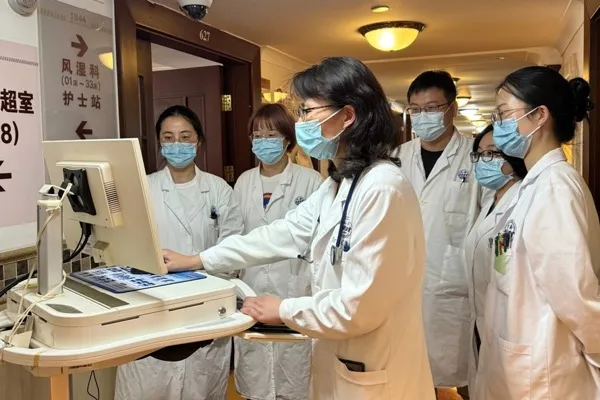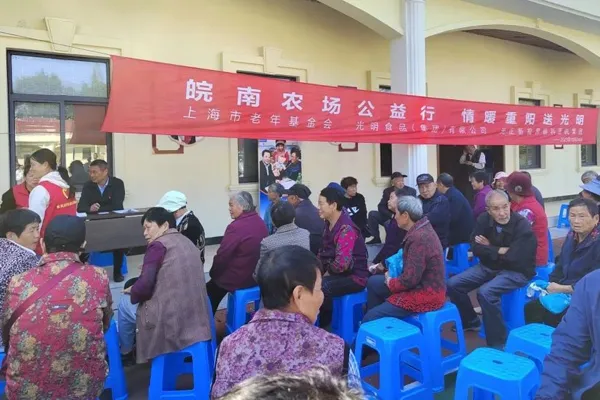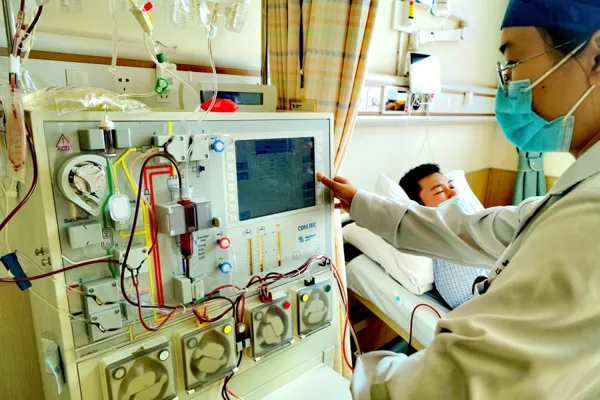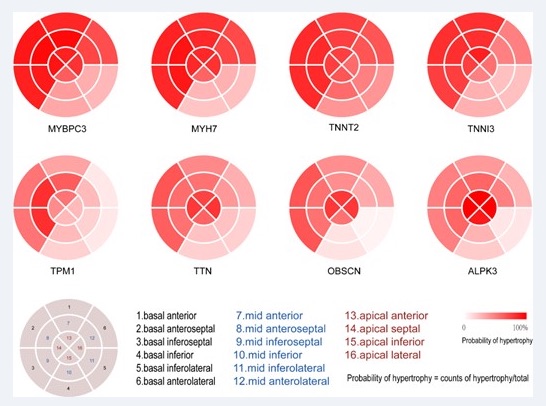There are more than 200,000 new rare disease patients in my country every year: Renji establishes a difficult and rare disease diagnosis and treatment center to help avoid detours
Fever, red and swollen eyes, nodules on the left ankle, pneumonia, redness and swelling of the auricles and bridge of the nose... strange symptoms appeared one after another all over the body. At one point, he was comatose and was sent to the ICU. He barely managed to survive after multiple blood transfusions. After going to 3 hospitals and 5 departments, Mr. Su, who had been ill for 3 years but could not find out the cause, finally found the answer in the Rheumatology Department of Renji Hospital Affiliated to Shanghai Jiao Tong University School of Medicine: This is a rare case of VEXAS syndrome. The first global reports of the disease were only 2 years apart.
Rare disease patients like Mr. Su are not uncommon at Renji Hospital. The "2023 China Rare Disease Industry Trend Observation Report" shows that there are currently more than 7,000 known rare diseases in the world, and there are more than 20 million patients with various rare diseases in my country, with more than 200,000 new patients every year. In order to further implement the national rare disease prevention and treatment policy and improve the level of diagnosis and treatment of difficult rare diseases, after half a year of preparation, the Diagnosis and Treatment Center for Difficult and Rare Diseases of Renji Hospital was officially established today. In the future, the center will leverage the multidisciplinary advantages of a large general hospital to provide high-quality clinical diagnosis and treatment services for patients with rare diseases, bringing hope to more patients and families.
VEXAS syndrome is an inflammatory disease caused by somatic mutations in the UBA1 gene and onset in adulthood. It is very rare in my country and lacks sufficient clinical diagnosis and treatment experience. In December 2020, researchers at the National Institutes of Health described this type of disease for the first time. The current prevalence of VEXAS syndrome is unknown, and it mostly occurs in men. The median age of onset is 64 years old. Ding Huihua, deputy chief physician of the Rheumatology Department, and Wu Lingling, the attending physician, use the experimental resources of the Institute of Rheumatology to provide free customized genetic testing for patients.
A week later, two doctors brought the diagnosis results: Mr. Su had significant somatic mutations, consistent with the diagnosis of VEXAS syndrome. However, there is currently no consistently effective treatment for VEXAS syndrome. For Mr. Su, he has tried various treatments in the past, but none of them worked.
Chen Sheng, chief physician of the Department of Rheumatology, led the team to formulate a precise treatment plan for the patient through general-practice discussions, combined with cutting-edge reports and clinical experience at home and abroad. After nearly a month of careful care, Mr. Su was discharged from the hospital safely. Outpatient follow-up data two weeks later showed that his physical condition was stable.
Mou Shan, deputy secretary of the party committee and vice president of Renji Hospital, said that according to incomplete statistics, 58 rare diseases in the first and second batch of rare disease catalogs promulgated by the National Health Commission have been diagnosed and treated at Renji Hospital Among them, about 50% of adult rare diseases in the rare disease catalog have been diagnosed and treated in the 24 clinical departments of Renji Hospital. In recent years, the inpatient department has admitted more than 4,000 rare disease patients included in the rare disease catalog.
Based on the urgent clinical needs and at the same time further improving the diagnosis and treatment capabilities of difficult and rare diseases, Renji Hospital has integrated the hospital's superior disciplines and high-quality resources, and actively prepared to build a diagnosis and treatment center for difficult and rare diseases, respectively in improving clinical capabilities, developing and applying new technologies. Technology, establishment of management and operation mechanisms, and development of backbones have been continuously made efforts. It is reported that a rare disease clinical diagnosis, clinical cohort study, treatment and follow-up evaluation system has been established.
Wu Hengche, head of the Office of the Difficult and Rare Disease Center, introduced that the hospital has sorted out the cases of rare disease patients diagnosed and treated in the hospital to form a rare disease case database, and the clinical department is constantly trying to develop and apply new technologies: for example, the use of liver transplantation technology has provided a total of more than 3,000 cases. to treat children with rare diseases; use self-designed sequencing methods to diagnose VEXAS syndrome in advance; use immune-targeted therapy technology to treat hematological tumors to extend the patient’s survival period and quality of life; innovatively use immunotherapy technology and stem cell therapy technology for treatment Nervous system immune diseases "neuromyelitis optica spectrum disease", etc.
Mou Shan said frankly that because rare diseases have the characteristics of low incidence, difficult diagnosis, many complications, complex diseases, poor treatability, and high treatment costs, they require multidisciplinary and interprofessional clinical collaboration to achieve accurate diagnosis and treatment. To this end, the hospital has actively cultivated a group of backbones, explored a group of disciplines, and built a multidisciplinary collaborative team. It will set up a "rare disease integration clinic" to allow patients to obtain diagnostic advice from multiple disciplines in one visit. "This year, we also organized a rare disease case competition with medical consortium units such as Punan Branch, Jiading Branch, Baoshan Dachang Branch, Hangzhou Bay Hospital, and Nantong Branch, and collected a total of 33 rare disease diagnosis and treatment cases from 19 departments. At the same time, The first TED science show on rare diseases was launched in the hope of promoting public understanding of rare diseases," said Min Jianying, deputy secretary of the party committee.
Xia Qiang, president of Renji Hospital, said that Renji Hospital will take the establishment of the Diagnosis and Treatment Center for Difficult and Rare Diseases as an opportunity to further enhance its diagnostic and treatment capabilities for difficult and rare diseases, improve the quality of medical services, and ultimately "make difficult problems no longer difficult, and make Rarely seen”.





